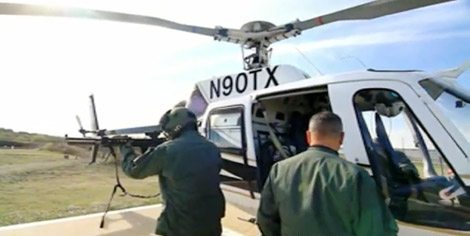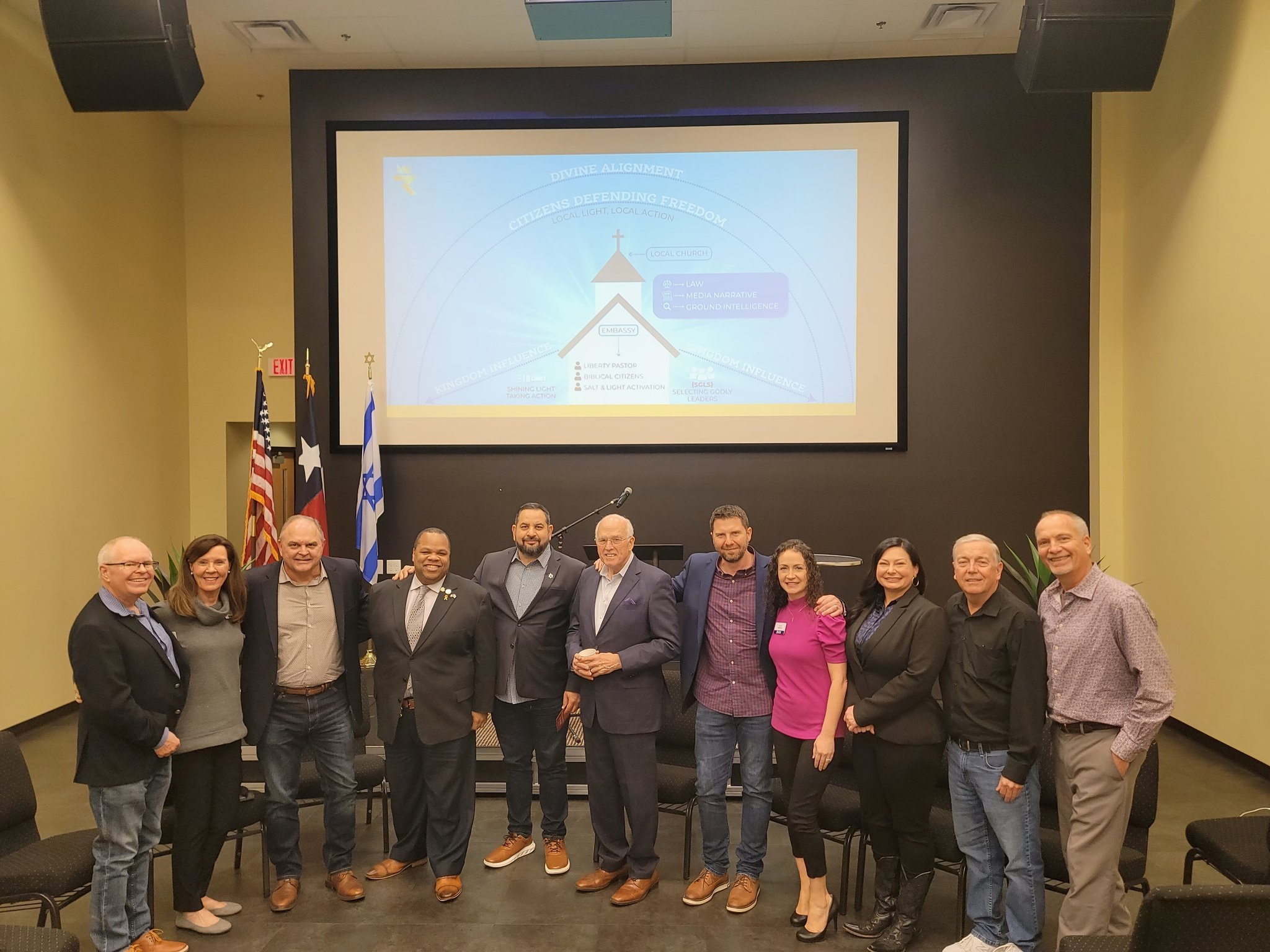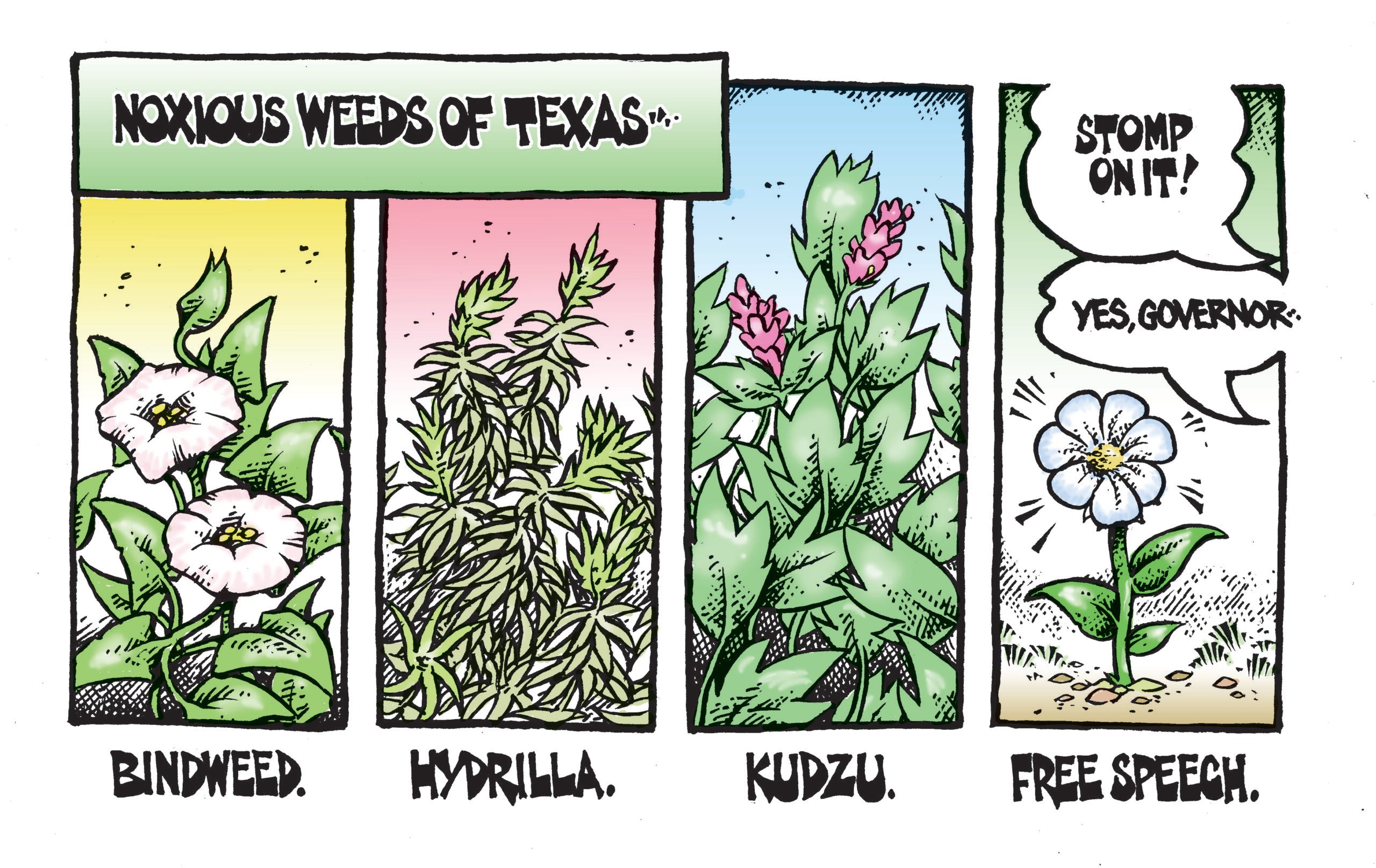
DPS Ends Controversial Helicopter Sniper Policy, Now What About the Gun Boats?

Texas Department of Public Safety Director Steve McCraw announced Thursday that DPS officers would no longer shoot from helicopters to disable vehicles, “unless we’re being shot at or someone else is being shot at.”
McCraw made the announcement during a the House Appropriations Committee hearing, after Houston Rep. Sylvester Turner asked McCraw to address the controversial policy.
Last October, DPS helicopter sniper Miguel Avila opened fire on a truck during a chase down a caliche road near the small Hidalgo County town of La Joya. Avila killed two men and injured a third. Texas Parks and Wildlife rangers had been pursuing the truck, thinking it was moving drugs, and called for backup from the DPS helicopter.
But the truck was not carrying drugs or weapons. Instead, nine Guatemalan nationals were hidden in the truck bed under a tarp. The driver was a 14-year-old boy.
The men had each paid $2,000 to be taken from San Martín Jilotepeque in the state of Chimaltenango, Guatemala through Mexico, and then another $3,000 each for passage into the United States. Most were headed for jobs in New Jersey, Alba Caceres, the Guatemalan Consul based in McAllen told the San Antonio Express-News after the shooting.
McCraw said DPS had reviewed its policy last Friday and decided to end it. “I’m a firm believer that they did exactly what they thought they needed to do,” he said of the DPS snipers. “And it was consistent with the Texas penal code.”
Despite McCraw’s continuing defense of the policy, the shooting was almost universally condemned by law enforcement experts and civil rights groups. ACLU of Texas Executive Director Terri Burke applauded the agency’s decision to end the policy in a statement.
“We are relieved that Texas is ending this extreme practice, which no other southwestern border states have ever allowed. We hope that this decision is a step, if only a small one, toward ending the culture of violence that pervades enforcement of border security in Texas.”
It may be a small step toward sanity in border security policy, but Texas still has a long way to go. A tragedy forced DPS to ponder its lethal force policies regarding helicopter snipers but not a word has been said about use of force policies regarding DPS’ armored gunboats now patrolling the Rio Grande.
During his remarks, McCraw mentioned that officers needed to reserve the right to shoot back. He said officers had been shot at more than 77 times from the Mexican side of the Rio Grande, but didn’t specify the time frame or where that statistic came from. He also didn’t say whether any officers had been wounded or killed in those shootings.
Bullets are flying from the U.S. side of the river, too. DPS has just begun its armed patrols on the river, while Border Patrol has been patrolling for years with some controversy. In September, a Border Patrol agent on a boat fired on a group of people on the Mexican side of the Rio Grande in Nuevo Laredo, killing a man at a barbecue. In the last three years, U.S. agents have fatally shot four other unarmed Mexicans as they stood on the Mexican side of the Rio Grande.
Between the Border Patrol and DPS, that makes two law enforcement agencies enthusiastically patrolling the border—and DPS’s new armored gunboats make the Border Patrol boats look like toys. Hopefully, it won’t take another tragedy before legislators look into the firepower behind DPS’s new “marine tactical unit.”


